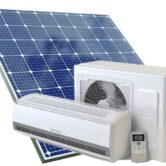Switching to solar energy is one of the smartest investments you can make for your home or business. Not only does it reduce your carbon footprint, but it can also save you significant money on electricity bills in the long run. However, choosing the right solar panel system can feel overwhelming with so many options available. This guide will walk you through the key factors to consider to help you make an informed decision.
1. Assess Your Energy Needs
The first step in choosing the right solar panel system is understanding your energy consumption. Review your past electricity bills to calculate your average monthly and annual usage, measured in kilowatt-hours (kWh). This information helps determine the size and capacity of the solar system you’ll need.
- For homes: Consider peak usage times and whether you plan to add energy-intensive appliances.
- For businesses: Factor in operational hours and equipment energy demands.
2. Evaluate Your Roof Space and Orientation
Solar panels need adequate space and proper sunlight exposure to operate efficiently.
- Roof size: Measure the available area on your roof. More space means you can install more panels and generate more power.
- Orientation and tilt: South-facing roofs in the Northern Hemisphere (or north-facing in the Southern Hemisphere) receive the most sunlight. The angle of your roof also affects efficiency.
- Shading: Avoid shaded areas caused by trees, chimneys, or nearby buildings as they reduce solar panel output.
If your roof isn’t ideal, consider ground-mounted solar panels or other alternatives.
3. Decide on the Type of Solar Panels
There are three main types of solar panels:
- Monocrystalline: Made from single-crystal silicon, these panels are highly efficient and have a sleek black appearance. They perform better in low-light conditions but tend to be more expensive.
- Polycrystalline: Made from multiple silicon crystals, these are less efficient but more affordable. They have a blue hue and are common for residential use.
- Thin-film: Lightweight and flexible, these panels are less efficient and have a shorter lifespan but are sometimes used for large-scale commercial projects.
Choosing the right type depends on your budget, roof space, and energy goals.
4. Consider Battery Storage Options
Pairing your solar panel system with battery storage allows you to store excess energy for use during nighttime or power outages. While batteries add to the initial cost, they can increase your energy independence and save more money in the long run.
Evaluate options such as lithium-ion or lead-acid batteries based on capacity, lifespan, and warranty.
5. Review Local Incentives and Regulations
Many governments and local authorities offer incentives, rebates, or tax credits for installing solar panels, which can significantly reduce upfront costs.
- Check eligibility for solar incentives in your area.
- Understand local permitting and zoning requirements.
- Ensure your system complies with regulations and utility interconnection rules.
6. Choose a Reliable Installer
A quality installation is crucial for system performance and longevity.
- Research installers with good reviews and certifications.
- Ask for quotes and compare warranties.
- Verify their experience with similar residential or commercial projects.
7. Calculate the Return on Investment (ROI)
Finally, assess how long it will take for your solar panel system to pay for itself through energy savings.
- Consider installation costs, maintenance, and potential energy bill reductions.
- Use online solar calculators or consult with your installer.
Choosing the right solar panel system involves careful planning and consideration of your unique energy needs, roof characteristics, and budget. By taking these steps, you can ensure your solar investment maximizes savings, efficiency, and environmental benefits.





